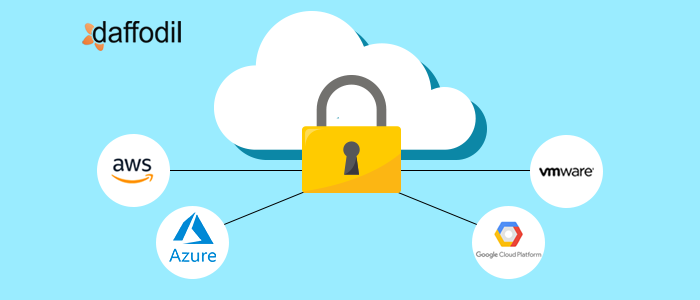
With a massive growth in computing needs, enterprises consider cloud services as an opportunity to unburden themselves from the job of maintaining their own IT infrastructure and software platforms. The benefits of public cloud services are recognized by SMEs and large enterprises and thus, they are migrating from their on-premise infrastructure to cloud.
After moving your infrastructure to cloud, did you ever try moving to a different cloud service provider? If yes, then at some point, you must have come across one of the major impediments to cloud service adoption, i.e. vendor lock-in.
Cloud vendor lock-in is a situation where the customers become dependent (or get locked-in) on a single cloud service provider and cannot move easily to a different vendor without substantial cost, technical incompatibility, or legal constraints.
The inability to freely lift and shift the data and IT workload from one cloud vendor to another, amid the rising competition amongst the vendors, troubles the enterprise, making them lookout for a solution to deal with vendor lock-in scenarios. Being able to cope with lock-in scenarios allows optimizing the overall cost and performance of the infrastructure and software applications.
But, how can enterprises ensure that they don’t get into the cloud vendor lock-in situation? How can enterprises ensure that the complexity of the migration process doesn’t force them to stay with a cloud service provider, even when it doesn’t meet their business requirements? The latter segment of the blog shares a few tips that can help to avoid vendor lock-in situations.
1. Wise Vendor Selection
One of the most common and precautionary ways to avoid vendor lock-in scenario is to choose the vendor wisely in the first-place. When you choose a cloud service provider, make sure that you read the provider’s policy or ask them how they facilitate moving a customer’s data out of their repository. Also, you can check for the tools and services that the service provider offers to facilitate data migration.
You can also consult a cloud technology expert to know which cloud service provider would work best for your business. For such consultation services, you can connect with our cloud consultant, Gaurav Sharma. Our cloud experts thoroughly analyze a business and help them choose the best service according to their business size, budget, performance requirements, etc.
2. Evaluate Vendor’s Exit Terms
While making vendor selection, it is important to assess a cloud vendor’s exit term. When you set an agreement with the cloud provider, check out their SLA to understand how they manage data and application migration. This is important in scenarios if a vendor terminates the service, or in the worst-case scenario, it goes out of business.
3. Create a Multi-Cloud Strategy
Understand that there is no one size that fits all. A service that works for one business might not work for another. Thus, it is a great idea to evaluate multiple vendors and choose the best of their services in terms of cost and performance.
In most of the cases, small-sized organizations are more vulnerable to vendor lock-in scenarios because they rely on a single cloud service provider for their needs. But, as their business scale and they wish to avail of different cloud services, lock-in becomes an impediment to their migration cycle. That is why a multi-cloud strategy is considered one of the most efficient ways to cope with cloud vendor lock-in.
4. Build Apps with Open Standards
Most of the cloud vendors support industry standards and compliances for application development infrastructure management. When apps are built using standards, switching between different cloud vendors becomes comparatively easier. In contrary scenarios, heavy customizations are required at a later stage of migration, resulting in vendor lock-in.
5. Consider a Loosely Coupled Architecture
To diminish the risk of vendor lock-in, the applications should be developed with loosely coupled components. This ensures that part of an application or a service can be moved to another cloud provider, without affecting the functioning of the entire application. For example, you can go for microservices cloud applications wherein it is possible to move certain services to a different vendor, without affecting the entire application.
6. Implement Modern Development Strategies
To maximize code portability, a number of DevOps tools are being used. Simply consider the container technology like Docker or CoreOs. They isolate the software applications from their environment and abstract dependencies from cloud providers. Since most of the cloud service providers support standard container formats, migrating an application from one vendor to another.
Then, there are configuration tools such as puppet or chef that automates the process of configuring an infrastructure to run the apps. As a result, applications can be deployed in a diverse IT environment, reducing the complexities of moving to a new cloud service provider.
Planning to Migrate to a Different Cloud Vendor?
Vendor lock-in is a common problem during migration. If you’re confronting the same, then our cloud migration experts can help you out. Connect with our team through our 30-minute free consultation session, who will understand your business requirement and will help you in seamless data and application migration.



